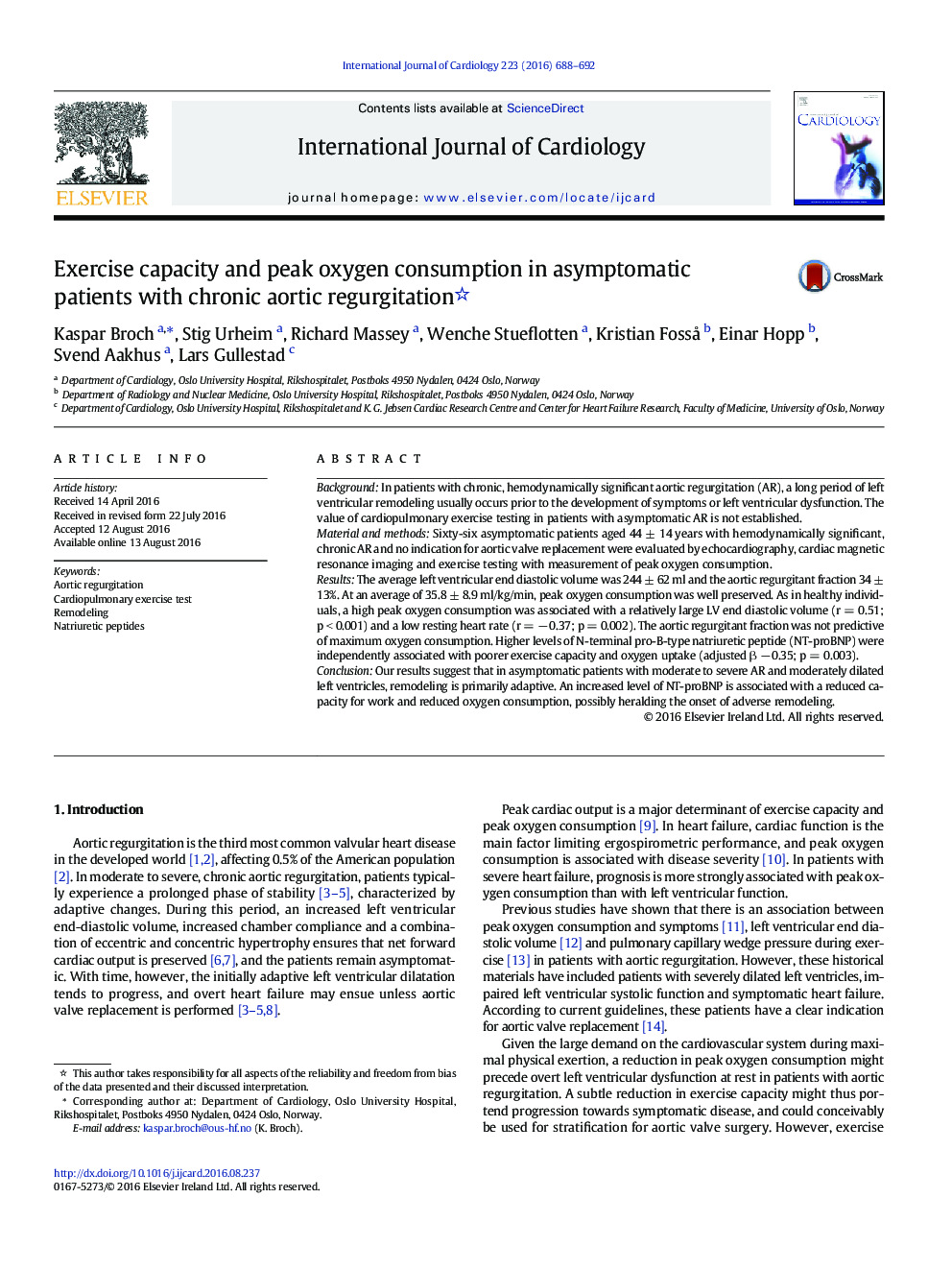| Article ID | Journal | Published Year | Pages | File Type |
|---|---|---|---|---|
| 5963237 | International Journal of Cardiology | 2016 | 5 Pages |
â¢Exercise capacity and peak oxygen consumption are preserved in asymptomatic patients with aortic regurgitation and moderately dilated, well-functioning left ventriclesâ¢Elevated levels of N-terminal pro-B-type natriuretic peptide are associated with reduced exercise capacity and reduced oxygen consumption in these patientsâ¢Elevated levels of natriuretic peptides may presage the onset of left ventricular decompensation in chronic aortic regurgitation
BackgroundIn patients with chronic, hemodynamically significant aortic regurgitation (AR), a long period of left ventricular remodeling usually occurs prior to the development of symptoms or left ventricular dysfunction. The value of cardiopulmonary exercise testing in patients with asymptomatic AR is not established.Material and methodsSixty-six asymptomatic patients aged 44 ± 14 years with hemodynamically significant, chronic AR and no indication for aortic valve replacement were evaluated by echocardiography, cardiac magnetic resonance imaging and exercise testing with measurement of peak oxygen consumption.ResultsThe average left ventricular end diastolic volume was 244 ± 62 ml and the aortic regurgitant fraction 34 ± 13%. At an average of 35.8 ± 8.9 ml/kg/min, peak oxygen consumption was well preserved. As in healthy individuals, a high peak oxygen consumption was associated with a relatively large LV end diastolic volume (r = 0.51; p < 0.001) and a low resting heart rate (r = â 0.37; p = 0.002). The aortic regurgitant fraction was not predictive of maximum oxygen consumption. Higher levels of N-terminal pro-B-type natriuretic peptide (NT-proBNP) were independently associated with poorer exercise capacity and oxygen uptake (adjusted β â 0.35; p = 0.003).ConclusionOur results suggest that in asymptomatic patients with moderate to severe AR and moderately dilated left ventricles, remodeling is primarily adaptive. An increased level of NT-proBNP is associated with a reduced capacity for work and reduced oxygen consumption, possibly heralding the onset of adverse remodeling.
